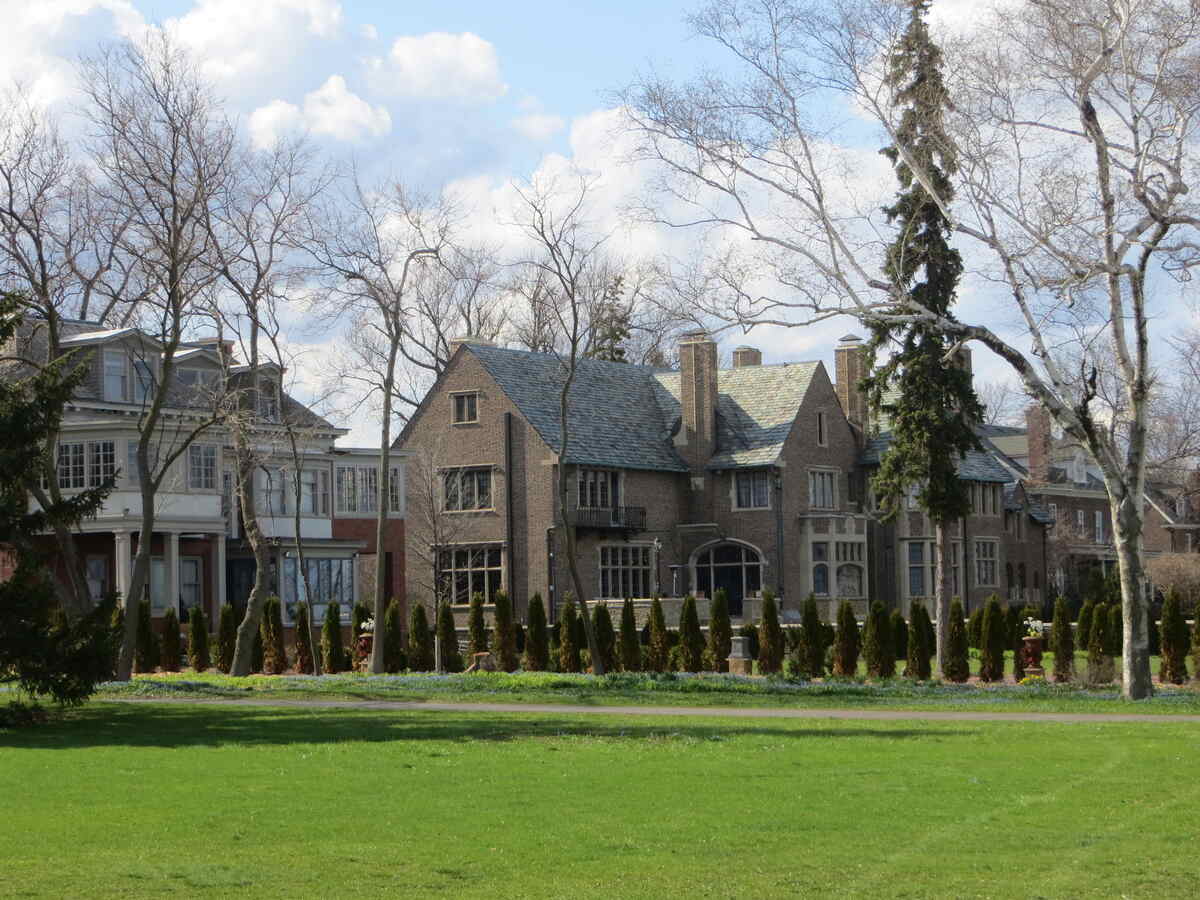
Attention all Wisconsinites! As the cool breezes of autumn start to blow through the state, it’s time to start thinking about your fall lawn care calendar for Wisconsin. While it may be tempting to sit back and enjoy the beauty of the changing seasons, it’s also the perfect time to give your lawn the attention it needs before winter sets in.
That’s why we’ve put together this comprehensive guide to fall lawn care so that you can keep your yard in top shape through the fall and beyond. Whether you’re a seasoned pro or a lawn care novice, our guide has everything you need to know to keep your lawn lush and green.
September
September is a crucial month for lawn maintenance, with plenty of tasks to be done to ensure a healthy lawn come springtime. In fact, early fall is often the busiest time of the year for lawn care in the Badger State. So, it’s time to grab your gloves and get to work!
Fertilize Your Lawn
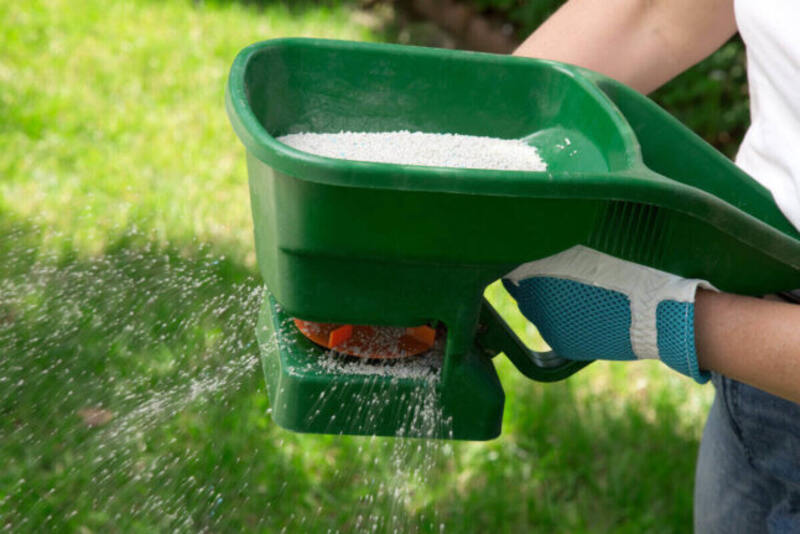
September is the perfect time for fall fertilizing if you live in Wisconsin, especially around Labor Day. Cool-season grasses, the most common in Wisconsin, thrive in cooler temperatures and are actively growing during fall, so fertilizing around this time encourages healthy growth and development, setting the stage for a lush, green lawn come springtime.
According to the University of Wisconsin, the best type of fertilizer to use in the fall is one with at least 25-50% slow-release nitrogen. This composition helps prevent the fertilizer from being washed away by water and ensures your grass gets the nutrients it needs over a longer period.
Warning: Avoid using fertilizers with quick-release nitrogen in the fall, which can lead to excessive growth susceptible to winter damage. They can also be washed through the soil instead of feeding your lawn.
Let Your Lawn Breathe
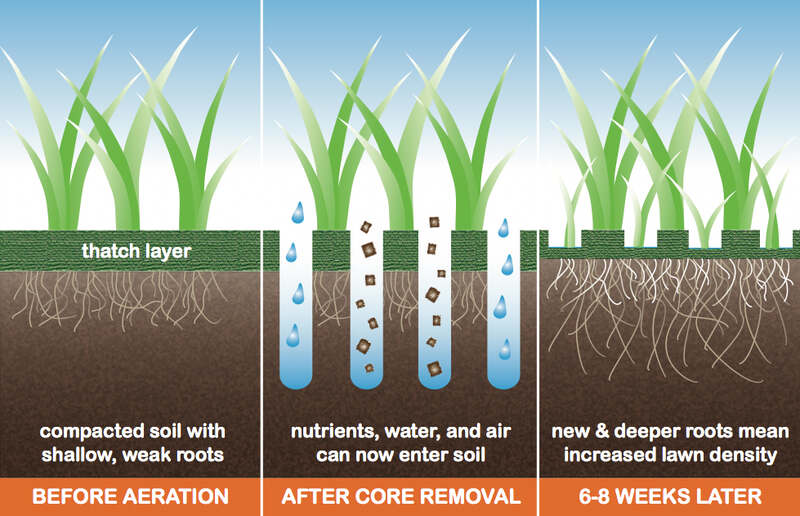
After a summer of barbecues, lawn games, and other outdoor activities, your lawn may feel a little worse for wear. You may notice it looks like the soil is compacted, hard to the touch, and that water is puddling. These are all signs that your lawn could benefit from aeration.
September is the perfect time to aerate your lawn in Wisconsin, especially between Labor Day and early October. Aeration is the process of removing small cores of soil from your lawn, which helps to relieve compaction and allows your grassroots to absorb more oxygen, nutrients, and water.
You can aerate your lawn by renting a core aerator from a local hardware store or hiring a professional to do it for you. Lawn aeration costs between $75 to $225.
Overseed Cool-Season Grass
If you’re looking to fill in bare spots or improve your lawn’s overall health and appearance, overseeding is a great option to consider. Fall is the best time of year to overseed cool-season grasses, especially after aeration.
Why overseed? By spreading grass seeds around your lawn, you can help fill in thin spots, improve the density of your grass, and promote healthy growth throughout the fall season. And since grass seeds won’t have to compete with weeds during the cooler months, fall is the ideal time to overseed.
Pro Tip: When overseeding your lawn in Wisconsin, checking the soil temperature with a soil thermometer is essential. Soil temperatures should be between 50 and 65 degrees for optimal grass seed germination.
Get Rid of Thatch
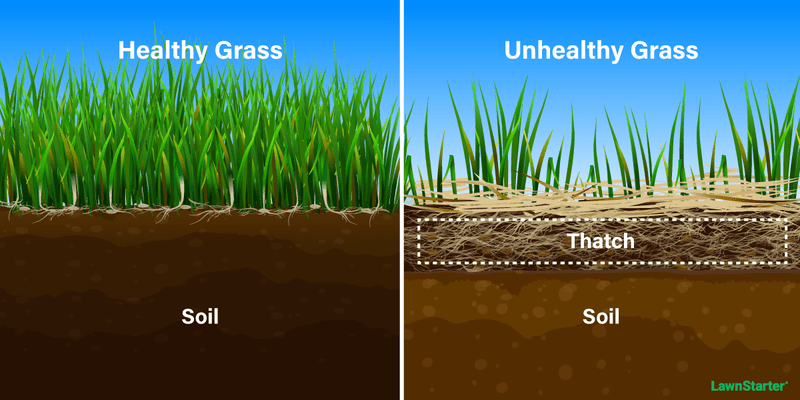
We know, the September to-do list can feel never-ending! But if you live in Wisconsin and want a lush, healthy lawn next spring, dethatching is an essential task to add to your list.
Dethatching removes dead and living organic matter buildup from your lawn, also known as thatch. A thin layer of thatch can actually be beneficial for your lawn, as it can help retain moisture and protect your grass roots from extreme temperatures. However, if thatch accumulates too thickly, over 1 inch, it can harm your lawn by:
- Increasing the likelihood of pest infestation.
- Impeding proper drainage and water absorption.
- Hindering the flow of essential nutrients to the grassroots.
- Decreasing the effectiveness of herbicides and fertilizers.
If you don’t want to do this yourself, lawn dethatching costs around $190 per hour.
Pro Tip: In Wisconsin, only Kentucky bluegrass and certain varieties of fine fescues are prone to thatch buildup. If your lawn has perennial ryegrass or tall fescue, you can likely skip this step.
Weed Control
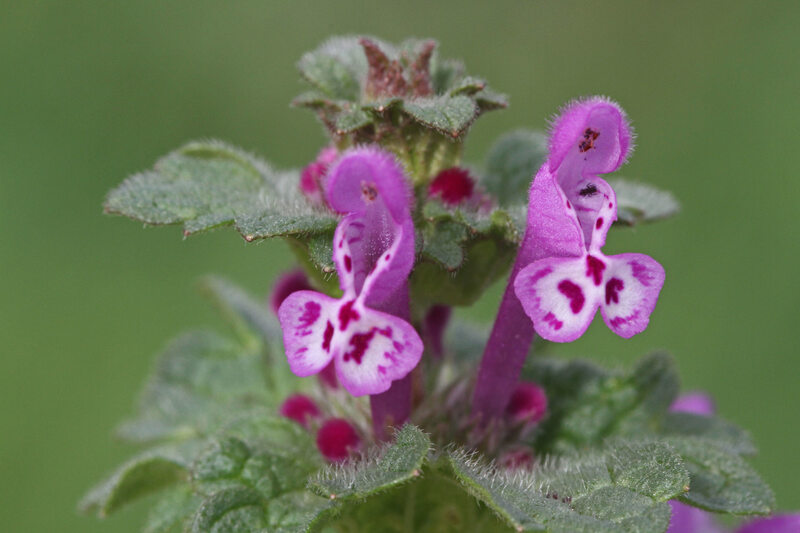
Prevention is key when it comes to weed control during fall in Wisconsin. Common winter weeds in Wisconsin include:
- Annual bluegrass
- Common chickweed
- Deadnettle
- Henbit
Applying a pre-emergent herbicide is crucial to preventing annual broadleaf weeds from taking root in your lawn. You can do it between late August and early October before you see the weeds. These herbicides prevent weeds seeds from sprouting, meaning that you likely won’t even see these weeds in your lawn, which will save you time and effort down the line.
Warning: If you’ve recently overseeded your lawn or plan to do so in the fall, it’s best to hold off on using pre-emergent herbicides. While these herbicides effectively prevent weed seeds from germinating, they can also prevent grass seeds from sprouting.
October
As the leaves begin to change and the air turns crisp, October is the perfect time to sit back and enjoy the beauty of autumn. However, while the lawn may require less maintenance than in September, a few tasks remain to be done.
Keep Watering
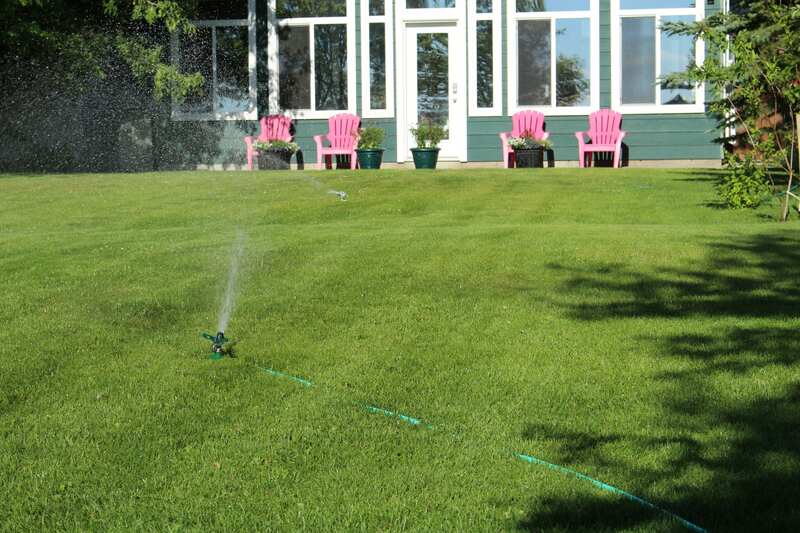
Watering the lawn is one of the most critical aspects of lawn care, and it’s recommended that you water your yard throughout fall, up until the first freeze. This usually happens between September 1st and 30th in northern Wisconsin and between October 1st and 15th in southern Wisconsin.
Grass needs about one inch of water per week to stay healthy and vibrant, so pay attention to the weather forecast and adjust your watering schedule accordingly.
Here are a few extra tips:
- Get a rain gauge to keep track of rainfall, and supplement with the sprinkler system whenever necessary.
- Water your lawn deeply and infrequently.
- Prefer watering in the early morning.
- Avoid overwatering.
- Get a rain sensor for your sprinkler system.
Rake Fallen Leaves
While it may be tempting to jump into a pile of leaves and toss them around, staying on top of raking them is important. A thick layer of leaves can smother your grass by blocking airflow and sunlight, leading to fungal diseases and other issues.
Once the leaves are dry, use a leaf rake to collect them into piles (or onto a tarp) and then transfer them to bags or a compost pile. It can be a great way to get some exercise and enjoy the beautiful fall weather while also taking care of your lawn.
Pro Tip: You can also use a mulching mower and improve your lawn with mulch by shredding fall leaves into smaller pieces. The tiny pieces of leaves (or grass clippings) will decompose in your lawn and provide nutrients, insulation, and weed protection for your grass.
November
November has arrived, and in some parts of the state, it already feels like winter. While the colder temperatures may make it tempting to hibernate indoors, a few tasks still need to be taken care of to ensure a healthy lawn come springtime.
Last Mow of the Season
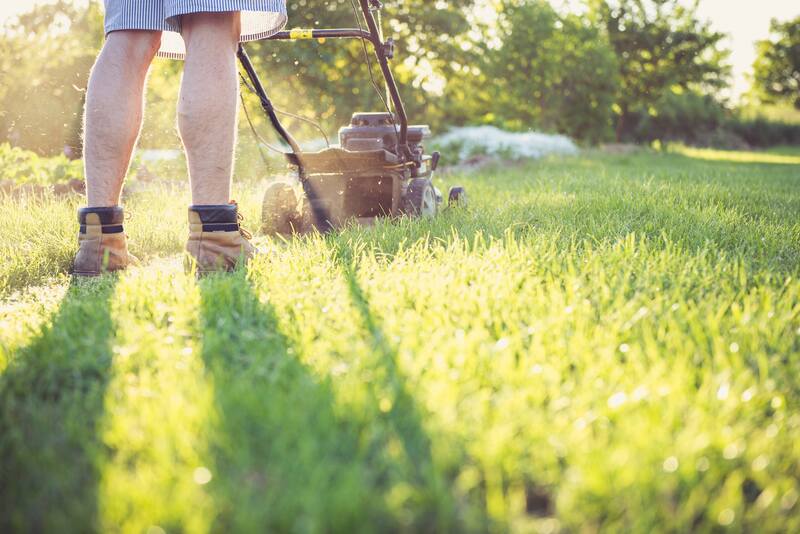
As the fall season comes to an end in Wisconsin, you’ll need to mow your lawn one last time before winter sets in. While it may be tempting to put your lawn mower away and forget about it until next year, don’t do it just yet.
In Wisconsin, you’ll need to mow throughout the fall season until the grass stops growing and goes dormant. This date will vary depending on which part of Wisconsin you’re in. Still, it usually falls between late October and late November. Give it one last mow when the grass stops growing before saying goodbye until next spring.
Pro Tip: This last mow of the season is important because going into winter with long grass can make it more susceptible to snow mold and matting, so don’t skip this step!
Winterize Lawn Equipment
Winterizing your gear is a crucial step to ensure it remains in good condition throughout the cold, harsh Wisconsin winter. The lawn mower and the irrigation system are the main pieces of lawn equipment that need to be winterized.
Winterizing is the process of preparing your lawn equipment for the cold weather by taking steps to protect it from damage caused by freezing temperatures, snow, and ice.
Here’s how to winterize your sprinkler system:
- Look for any damaged, missing parts, and leaks.
- Turn off the water supply.
- Turn off the timer.
- Drain the water.
- Insulate any exposed components.
- Do all of this at least one week before the first hard freeze.
And here are a few tips to winterize your lawn mower (check our guide for a more detailed view):
- Drain or burn off any remaining fuel so it doesn’t degrade or clog fuel lines.
- Change the spark plug.
- Balance and sharpen the lawn mower blades.
- Clean the outside.
- Cover the lawn mower with a tarp or garbage bag.
FAQ About Fall Lawn Care in Wisconsin
The best time to fertilize your lawn in Wisconsin is in early fall, around Labor Day. This is because cool-season grasses, the most common in Wisconsin, are in their growing season.
You can also split your fertilizer application with a heavier application in the fall and a lighter one during your spring lawn care routine.
If you’re looking for the best lawn fertilizer in the fall, look for one that contains at least 25% to 50% slow-release nitrogen. It’s also important to consider the amount of nitrogen you’re using — for grass grown in the sun, aim for 1 pound of nitrogen per 1,000 square feet, while grass in the shade should receive half a pound.
The best grass types for Wisconsin are cool-season grasses. These grasses are well-suited to Wisconsin’s climate and withstand the state’s cold winters and hot summers. The best cool-season grasses for Wisconsin lawns are:
● Kentucky bluegrass
● Tall fescue
● Perennial ryegrass
● Fine fescues
Bring In the Professionals
As the fall season arrives in Wisconsin, it’s essential to take the necessary steps to prepare your lawn for the winter months ahead. From fertilizing and overseeding to raking leaves and winterizing your equipment, there’s a lot to keep in mind.
If you need help with any of these tasks, consider contacting a trusted lawn care professional in your area. We have lawn care pros in cities throughout Wisconsin, including Madison, Milwaukee, Green Bay, and more.
Main Image Credit: David Wilson / Flickr / CC BY 2.0